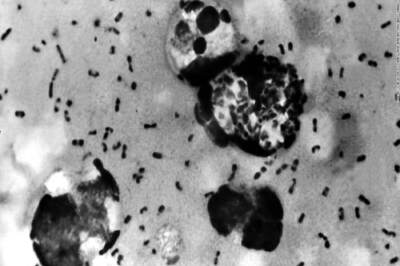
views
Boot into Safe Mode.
Safe mode prevents system crashes. When you boot Windows in Safe Mode, it boots with only the essential drivers, files, and programs. This can prevent Windows from crashing while you troubleshoot. Boot Windows into Safe Mode with Networking so that you have internet access to research the problem. Use the following steps to do so: Click the Windows Start menu. If you cannot boot into Windows, boot up your computer and press and hold the Power button as soon as you see the Windows or manufacturer's logo. This will force-shutdown your computer. Repeat 3 times to force your computer to boot into Recovery Mode. Click the Gear/Settings icon. Click System. Click Update & security (Windows 10 only). Click Recovery. Click Restart Now next to "Advanced Startup" to boot into Recovery Mode. Click Troubleshoot. Click Advanced Options. Click Start up Settings. Click Restart. Press 5 to boot into Safe Mode with Networking.
Update Windows.
You may have an outdated version of Windows. Windows updates often contain critical security updates and fix known bugs. Use the following steps to update Windows: Click the Windows Start menu. Click the Gear/Settings icon. Click System. Click Update & security (Windows 10 only). Click Windows Update. Click Check for updates. Click Download and install if an update is available.
Run a virus scan.
You may have a virus or malware. If you have a virus, you should be able to catch it by running a virus scan. Open your antivirus program and select the option to run a full scan. Wait for the scan to finish and quarantine any malicious files that are found. If you don't have an antivirus program installed, you can download and install the free version of Malwarebytes and use that to run a virus scan.
Check your minidump files.
Dump (.dmp) files can help you troubleshoot BSOD issues. When Windows crashes, it usually generates a minidump (.dmp) file. These files are usually located in the "C:\Windows\minidump" folder. There are a few programs you can install that will read the minidump files and report any errors that are found. A couple of programs you can install include WinDbg, which you can download from the Microsoft Store. BlueScreenView is a simple program, which you can download from https://www.nirsoft.net/utils/blue_screen_view.html/. To use WinDbg, install the program and load a dump file that occurred around the time of the crash. Type "!analyze -v" in the command line and check for any errors in the "Debug Analysis" area. You can do a Google search any errors or files responsible for the crash. This will help you determine what caused the crash is (i.e, a graphics driver, memory, your hard drive, etc). To use BlueScreenView, install the program and load a dump file that occurred around the time of the crash. It will analyze the dump file and highlight any files or programs responsible for the crash in red as well as report any error codes. You can Google this information to help you determine what the cause of the crash was (i.e. your graphics driver, memory, hard driver, etc).
Check for problematic programs and uninstall them.
You may have installed a program that is causing problems. You can sort apps installed on your computer by the date they were installed. This allows you to check for any programs that were installed around the time the error started happening and uninstall them. Uninstall any programs that occurred around the time of crash, especially if they are not from a trusted source. Use the following steps to do so: Click the Windows Start menu. Click the Gear/Settings icon. Click Apps. Click Installed Apps or Apps & features. Select "Date installed" in the drop-down menu next to "Sort By." Locate any programs that were installed around the date the problem started. Click the icon with three dots (⋯) next to the app (Windows 11 only). Click Uninstall Follow the prompts to uninstall the application.
Update or reinstall your drivers.
You may have a corrupt driver. If the error started happening after a driver update, there's a good chance that driver is the culprit. You can also check your minidump files to see what particular driver may be responsible for the crash. Unfortunately, there is no menu in Windows that tells you when your drivers were updated. It is recommended that you update your disk drivers and your graphics drivers at a minimum. If this doesn't fix the problem, you can uninstall the driver and reinstall it from the manufacturer's web page. Use the following steps to update your drivers: RIght-click the Windows Start menu. Click Device Manager. Expand a device (i.e. "Disk Drivers," "Display Adapters). Right-click a driver. Click Update Driver. Click Search automatically for drivers. Follow the prompts to complete the installation. Alternatively, if you want to uninstall a driver, right-click the driver and click Uninstall driver. Then download the driver from the website of the manufacturer.
Run a Windows Memory Diagnostic.
Your memory may be corrupt. You can check your memory for errors using the Windows Memory Diagnostic tool. This will restart your computer and check for problems. Use the following steps to run the Windows Memory Diagnostic Tool: Click the Windows Start menu. Type Windows Memory Diagnostic. Click the Windows Memory Diagnostic tool. Click Restart Now and Check for Problems.
Scan files for errors.
You may have corrupt files. You can run the Windows file scanner utility using the Command Prompt. This will scan your hard drive for corrupt files and attempt to fix any that are found. Use the following steps to run the file scanner utility: Click the Windows Start menu. Type cmd. Right-click the Command Prompt and click Run as administrator. Type SFC /scan now and press Enter.
Check your hard driver for errors.
Your hard drive may have issues. You can run the Windows disk checker utility using the Command Prompt. This will scan and check the health of your hard drive. It will also attempt to fix any issues it finds. Use the following steps to run the disk checker utility: Click the Windows Start menu. Type cmd. Right-click the Command Prompt and click Run as administrator. Type chkdsk C: /f and press Enter. Press Y and press Enter.
Reinstall Windows.
Your Windows registry may be corrupt. Problems with the Windows registry or corrupt files could cause your computer to crash. You may need to reinstall Windows to fix the issue. It is recommended that you do this as a last resort and back up any files and data you want to keep before starting. When you reinstall Windows, you have the option to keep your files or remove everything. Removing everything will completely erase your hard drive and all your files and data. Try to keep your files first, and if that doesn't work, try removing everything. Use the following steps to reinstall Windows: Click the Windows Start menu. You can also boot into Recovery mode by booting up your computer and pressing and holding the Power button as soon as you see the Windows or manufacturer's logo. Repeat 3 times to force your computer to start in Recovery Mode. You can also create a Windows boot disk and boot from the disk to reinstall Windows. Click the Gear/Settings icon. Click System. Click Update & security (Windows 10 only). Click Recovery Click Reset PC or Get Started next to "Reset this PC." Click Keep my files. Click Remove everything if the problem continues. Click Cloud download to download a fresh copy of Windows. If this option isn't available or you're not connected to the internet, click Local reinstall instead. Click Next, Click Next again. Click Reset.




















Comments
0 comment